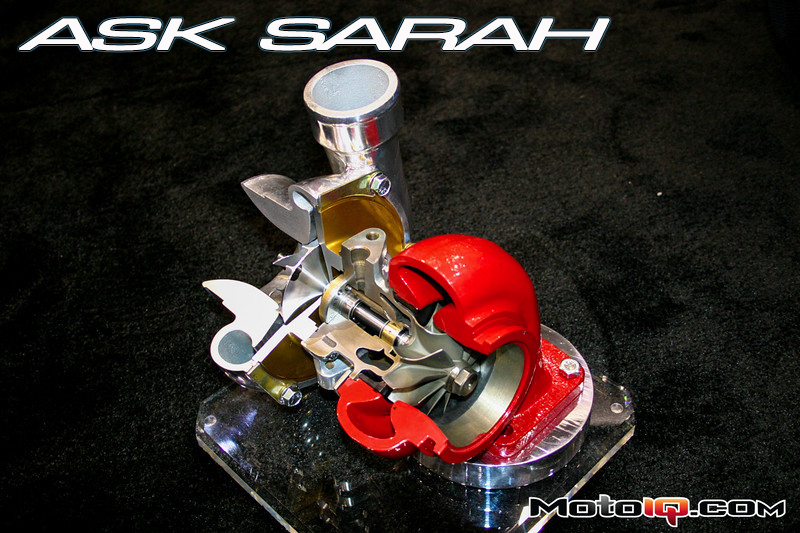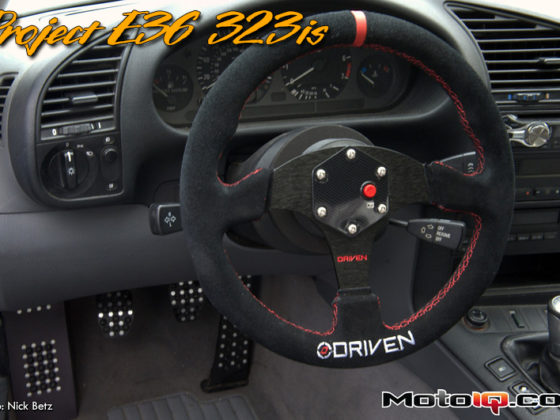,
Lag for Days…..
Early turbochargers were much less efficient and designed with inferior aerodynamics, which led to poor throttle response and a lot of lag. Turbo lag can be managed by properly matching a well-designed turbo to the engine. Generally, larger turbos have more inertia and require more gas volume to spool up so they have more lag. Improvements in designs the last decade include features like divided turbine housings and ball bearing center sections that have reduced lag. A divided turbine housing (twin scroll) uses dual side by side passages into the housing. When coupled with a pulse converter manifold that separates exhaust pulses as many crank degrees in the firing order as possible, a divided housing reduces lag, decreases exhaust manifold backpressure on the top end, reduces the potential for reversion, and increases fuel economy.
 Precision Turbo and Engine T4 twin scroll housing offers better transient response for quicker spool up.
Precision Turbo and Engine T4 twin scroll housing offers better transient response for quicker spool up.The divided housing is based off the same reasoning a tri-Y header uses: keep spent exhaust gases out of an adjacent cylinder drawing in fresh air. At high rpm on a turbo car, exhaust backpressure is usually significantly higher than atmospheric pressure and often higher than the intake manifold pressure as well. A divider between each of the two volutes allows the cylinders to expel the exhaust gases without contaminating the cylinders that are on overlap with exhaust gas. Since there are two openings- each a smaller overall volume than a single scroll design- the exhaust velocity of each pulse can be maintained. Divided housings are more beneficial on 4 cylinder engines that can benefit from the separation of the pulses. By keeping exhaust pulses from traveling to an adjacent cylinder, divided housings also reduce cross-cylinder reversion, which results in an increase in volumetric efficiency. Garrett’s twin scroll turbine housing is an example of a divided housing.
Oil-Vey!
Most modern turbos have a long service life if properly maintained and if the oil supply is kept clean. Many aftermarket turbos are designed by OEM turbo suppliers like Garrett, Mitsubishi, IHI, and Borg Warner. These turbos are OEM validated which means they have proven they are at least 99% reliable for over 100,000 miles. Remember the day when engines didn't even last that long?
 A closeup of a journal bearing system shows the journal bearings (bronze colored), spacer to locate the bearings on the shaft, and the thrust spacer on the compressor side (left).
A closeup of a journal bearing system shows the journal bearings (bronze colored), spacer to locate the bearings on the shaft, and the thrust spacer on the compressor side (left). The turbo’s rotating assembly (turbine and compressor wheels and shaft) is exposed to radial and axial loads. The turbo’s bearing system (either journal or ball bearing) must be capable of enduring these loads. Journal bearings are cheap and good for mass production. They use a flat thrust bearing to withstand thrust loads and cylindrical bearings to manage radial loads. Oil (and lots of it!) prevents metal to metal contact.
A ball bearing center section uses ceramic, angular contact ball bearings in a floating cartridge instead of a sleeve type traditional bearing system. Ball bearing center sections offer better fuel economy and quicker transient response. Ball bearing center sections require less oil volume for adequate lubrication. Only the steel balls in a ball bearing cartridge need to be lubricated. This reduces the chances for leaky seals and also makes the ball bearing center section less likely to fail due to inadequate lubrication. It also creates less wear on the turbo when turning the engine off. Ball bearings don't rely on hydrodynamic lubrication (oil shearing preventing the marriage of metals) like a journal bearing system. Less oil means less viscous drag and friction. Turbochargers equipped with ball bearing center sections will spool up 300 to 500 engine rpm quicker, or about 15% faster.
A ball bearing center section doesn’t use a thrust bearing which also happens to be a common point of failure for most turbo systems, making it is more reliable for both daily driving and racing. Ball bearing center sections can tolerate multiple times more thrust load than the traditional sleeve bearing center sections. The only disadvantages of ball bearing turbos are they cost more to produce and rely more on water cooling since less heat is conducted away by oil.
 Both thrust and radial loads exert stress on the turbo's rotating assembly. Radial loads act perpendicular to the shaft. Thrust loads occur along the shaft due to high pressures acting on the compressor wheel. Variable geometry turbines may produce greater thrust loads because they can drive the compressor to higher boost pressures at lower flows. The Garrett VNT DualBoost turbo's dual-sided design keeps both sides balanced to combat these thrust loads.
Both thrust and radial loads exert stress on the turbo's rotating assembly. Radial loads act perpendicular to the shaft. Thrust loads occur along the shaft due to high pressures acting on the compressor wheel. Variable geometry turbines may produce greater thrust loads because they can drive the compressor to higher boost pressures at lower flows. The Garrett VNT DualBoost turbo's dual-sided design keeps both sides balanced to combat these thrust loads.Turbo manufacturers are also moving towards oil free air bearings which will use anti-wear coatings at low speeds to prevent metal to metal contact. At high speeds, the air pushes a foil journal lining away from the turbine shaft forming an air cushion that prevents metal on metal crime. All improvements in bearing design are driven to reduce friction and improve efficiency. Reliability around load and damping capacities with oil free air bearings still need some development but the more R&D, the more this will improve.



